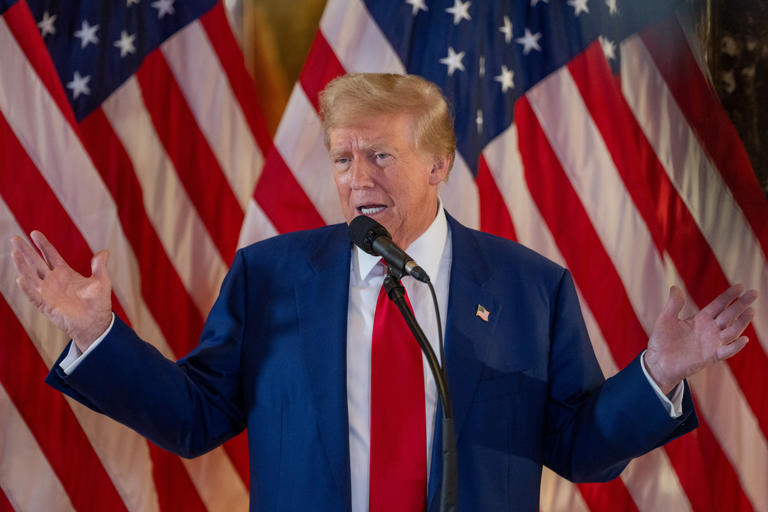Former President Donald Trump’s proposal to replace income taxes with tariffs has ignited a vigorous debate among economists and policymakers, prompting scrutiny into its potential impacts on American households and the broader economy.
Trump’s Proposal and Initial Reactions
During a private meeting with Republican lawmakers, Trump reportedly floated the concept of implementing an “all-tariff policy” as a means to eliminate income taxes. This proposal aligns with Trump’s long-standing advocacy for tariffs as a tool to bolster domestic manufacturing, reduce trade deficits, and shift production back to the United States. However, economists and experts quickly raised significant concerns about the feasibility and economic consequences of such a radical fiscal shift.
Brendan Duke, an economist associated with the Center for American Progress Action Fund, underscored the impracticality of replacing the substantial revenue generated by income taxes with tariffs on imports. Duke highlighted that while total imports amount to approximately $3 trillion annually, income tax revenues reach around $2 trillion. He argued that relying solely on tariffs to fill this revenue gap would likely result in a substantial tax burden increase for most American families, estimating an average hike of $5,000 per typical household. Conversely, Duke pointed out that wealthier households in the top 0.1% income bracket could potentially benefit significantly from such a policy, receiving average tax cuts amounting to $1.5 million.
Economist Insights and Analysis
Nobel Prize-winning economist Paul Krugman also weighed in on the proposal, expressing skepticism about its practicality. Krugman calculated that achieving revenue neutrality through tariffs alone would necessitate an average tariff rate as high as 133%. He explained that while tariffs might initially generate revenue, they would also increase costs for consumers and businesses alike. This could potentially lead to reduced overall imports as businesses pass on higher costs to consumers, thereby diminishing tariff revenue and necessitating even higher rates to maintain fiscal balance. Krugman cautioned that this cycle could trigger economic inefficiencies, market distortions, and broader negative repercussions on the economy.
Historical Context and Practical Realities
Krugman contextualized the discussion by referencing historical precedents, noting that tariffs were a primary source of federal revenue in the 19th century when government expenditures were significantly lower compared to today’s complex fiscal obligations. He emphasized that reverting to such an approach without considering modern economic realities and global trade dynamics could be detrimental and impractical.
Criticism and Challenges
Critics of Trump’s tariff-centric proposal argue that it oversimplifies the complexities of global trade and taxation systems. They contend that while tariffs can serve as a strategic tool in certain contexts, relying solely on them to replace income taxes poses substantial risks and uncertainties. Concerns persist about potential retaliatory measures from trading partners, increased consumer prices, and disruptions to international supply chains. Moreover, the broader economic impact on business operations, competitiveness, and investment flows remains a subject of intense debate and concern.
Conclusion and Future Considerations
Trump’s proposal to replace income taxes with tariffs represents a departure from conventional fiscal policy norms and has sparked robust debate across political and economic spectrums. As discussions unfold, the feasibility, practicality, and implications of such a significant policy shift will continue to be scrutinized by policymakers, economists, and the public. The ongoing dialogue underscores the intricate interplay between trade policy, fiscal strategy, and economic outcomes, shaping the trajectory of U.S. economic policy in the years ahead. As stakeholders navigate these complexities, thoughtful analysis and informed decision-making will be essential in charting a course that balances economic objectives with long-term sustainability and prosperity for all Americans.
